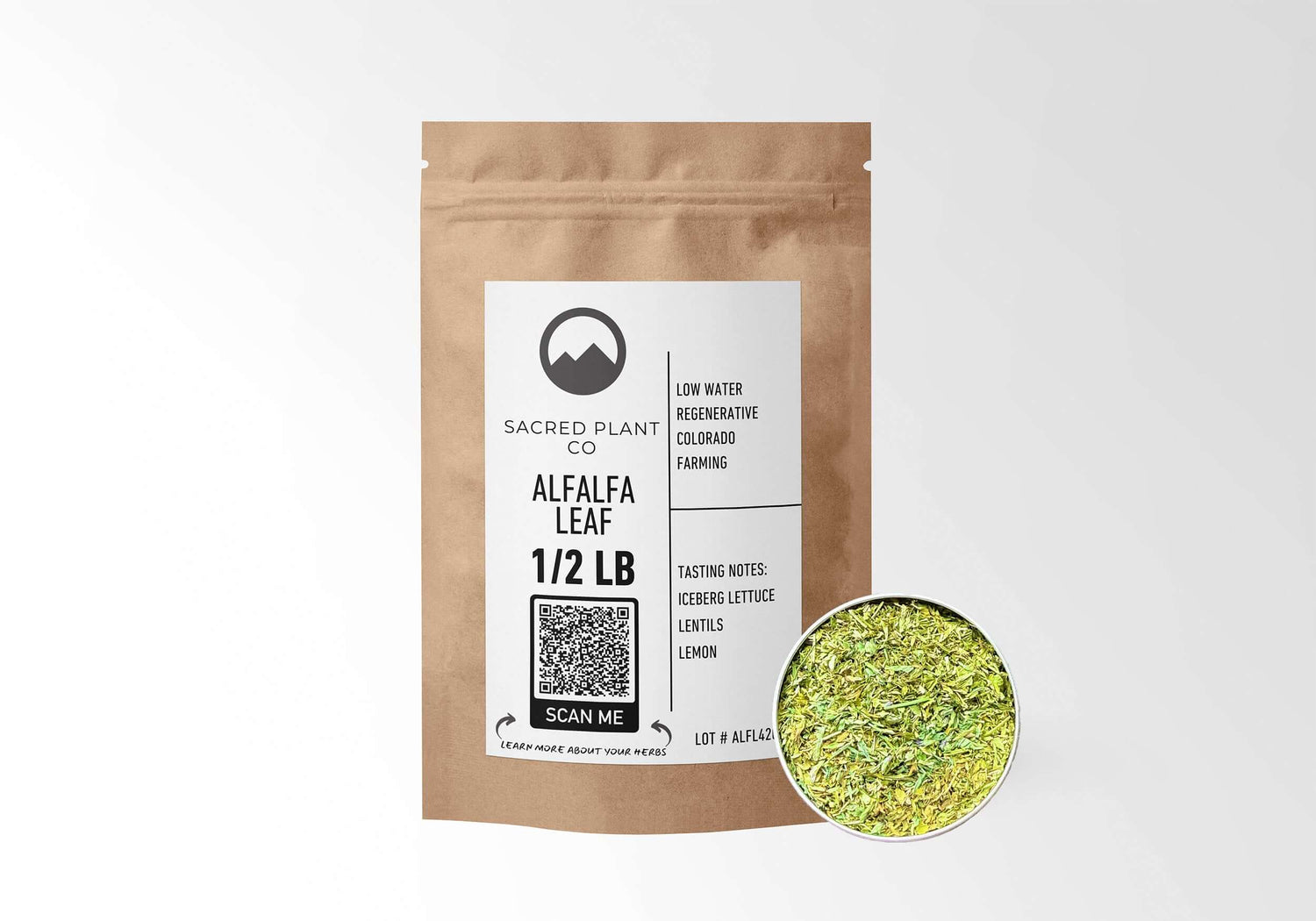Regeneratively Grown Alfalfa: From Soil Health to a Cleaner, Greener Cup
Nitrogen fixation • Deep roots & soil structure • Erosion control • Biodiversity • Label literacy • Testing transparency
Why this matters: When you choose **regeneratively grown alfalfa**, you’re not just buying an herb—you’re investing in practices that rebuild soil, protect waterways, and support biodiversity. And yes, it can taste better too: brighter aroma, cleaner finish, and fewer off-notes when fields and drying are managed with care.
What “regeneratively grown” really means

- Cover crops & living roots: protect soil & feed soil biology.
- Minimal tillage: preserves soil structure and microbial networks.
- Composts & on-farm fertility: recycle nutrients and organic matter.
- Diversity & habitat: hedgerows, pollinator strips, mixed rotations for resilience.
- Water stewardship: ground cover and aggregation reduce erosion and runoff.
Bottom line: Regenerative systems focus on outcomes—improving soil function—rather than chasing a single input or certification.
Why alfalfa is a soil-building superstar
- Deep taproots: improve water infiltration and help form stable soil aggregates.
- Biological nitrogen fixation: alfalfa’s rhizobia convert atmospheric N₂ into plant-available forms, reducing synthetic fertilizer needs for following crops.
- Perennial cover: keeps soil armored, lowering erosion risk and supporting soil organisms year-round.
- Crop rotation benefits: breaks pest cycles and can improve yield potential for the next crop.
- Pollinator & habitat value: flowering stands support beneficial insects on diversified farms.
How soil-first farming shows up in flavor & quality
- Cleaner aromatics: healthy, well-cured leaf tends to brew greener and brighter with fewer musty notes.
- Consistency: uniform cut & sifted particle size = more predictable extraction in your kitchen.
- Careful drying: low, steady temperatures protect delicate aromatics and color.
- Storage: oxygen/light control preserves freshness—look for light-protective, airtight packaging.
If you want brew-method details (hot vs. cool, tannin control, iron strategy), see our separate brew science guide. This page focuses on sourcing and soil outcomes.
Shop regeneratively grown alfalfa
We hand-pack small batches for a clean, dependable cup and publish clear product details so you can buy with confidence.
Label literacy & testing transparency
- Identity: Medicago sativa (alfalfa); plant part = leaf; cut & sifted.
- Origin & harvest year: helps you evaluate freshness and sourcing.
- Lot number: enables traceability from field to package.
- COA access: recent microbial panel + heavy metals; optional pesticide residue screen.
- Packaging: light-protective, airtight materials; store cool, dark and dry.
Do a quick audit: Use the HowTo checklist (included in this page’s structured data) to vet any supplier’s regenerative and quality claims.
Savory mineral broth (recipe)
This broth highlights the herb’s clean, green character and doubles as a flavorful cooking liquid for grains or beans.
Ingredients
- 4 cups water
- 2 tbsp alfalfa leaf (cut & sifted)
- 1 small bay leaf
- 4–6 parsley stems or celery leaves
- Few peppercorns
- 1 strip lemon zest (no white pith)
- Sea salt to taste
Directions
- Combine all ingredients; bring to a bare simmer.
- Cover, cook 10 minutes; turn off heat and steep 10–15 minutes.
- Strain, season lightly, and sip—or cool and use to cook rice, quinoa or beans.
Tip: For a brighter cup, add the lemon zest only during the final 5 minutes.
FAQ: Regeneratively Grown Alfalfa
Does regenerative farming change nutrition?
Outcomes vary by farm and season, but soil-centric systems often emphasize plant vitality and careful curing—factors that help preserve aroma/color and may support a more consistent pantry experience.
Is alfalfa a good cover crop?
Yes—its perennial habit, nitrogen fixation and deep roots make it valuable for soil structure, living cover and rotation diversity.
How can I verify regenerative claims?
Look for specific practices (cover crops, minimal tillage, compost, habitat), harvest/origin detail, and a current COA. Our HowTo checklist in the structured data outlines an easy vetting workflow.
Any safety notes I should know?
Alfalfa leaf contains vitamin K. If you take warfarin, keep vitamin-K intake consistent and coordinate with your clinician. Store dried leaf airtight, cool and dark.
Where can I learn brew techniques?
See our separate brew-science guide for hot vs. cool infusions, tannin control and iron-savvy pairing. This page focuses on sourcing and soil outcomes.





